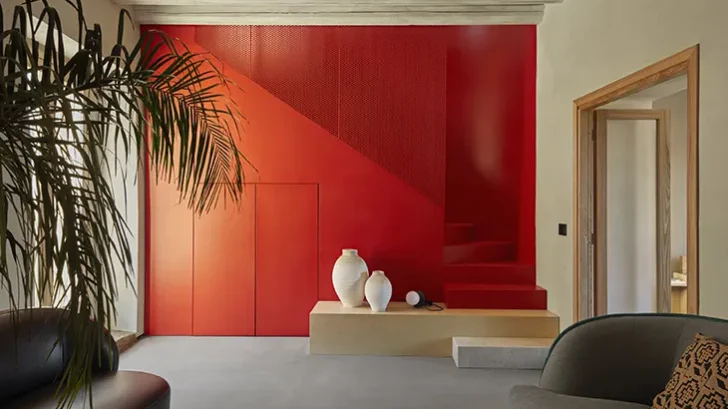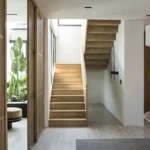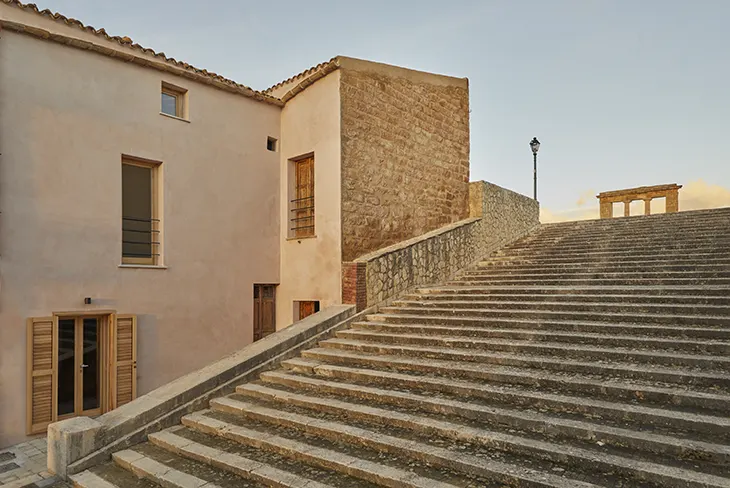
Didea architecture firm has completed a project in Sambuca di Sicilia that transforms a ruined vernacular home into a contemporary residence. Developed with Airbnb under the “1 Euro House” initiative, the project demonstrates how architectural intelligence, material restraint, and cultural sensitivity can renew historic villages while addressing depopulation challenges.
HOUSING
Located within Sambuca’s historic town walls, the original early 20th-century structure was in a state of collapse. Floors had given way, utilities were absent, and moisture had severely damaged the building. Didea approached the renovation by respecting the architectural grammar of the house while introducing contemporary, open-plan interiors across three levels. The design preserves vaulted ceilings and enfilade rooms, restoring dignity without nostalgia.
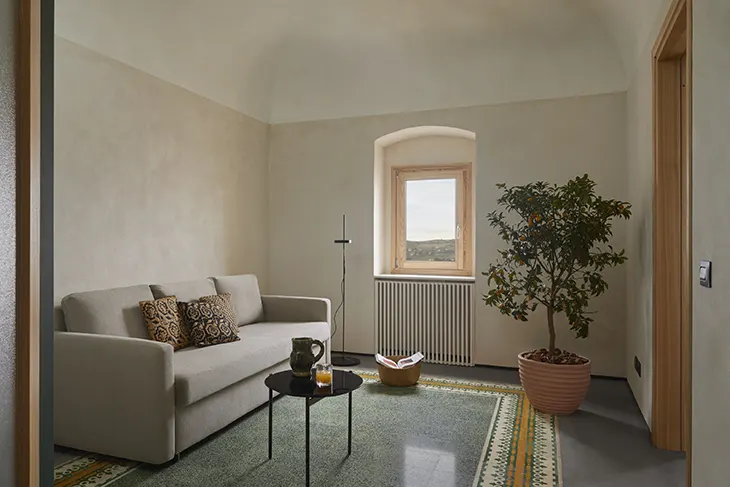
Two perforated steel staircases, one in red and the other in green, define the vertical circulation and serve as sculptural elements within the home. Their bold presence contrasts with the muted, warm palette of birch plywood panels, raw earth textures, and Sicilian Perlatino marble. Natural oak wood cladding, parquet flooring, and Kerakoll Design House patina treatments further enrich the interiors. The staircases also filter light, animating the house as daylight shifts.
Natural light plays a central role in shaping the spatial character. It filters through the steel staircases and translucent doors, creating a soft, dynamic rhythm throughout the day. Neutral finishes amplify this effect, resulting in a Mediterranean interior that resonates with the village context. The controlled palette, combined with crafted surfaces, creates a fluid atmosphere in balance with Sambuca’s environment.
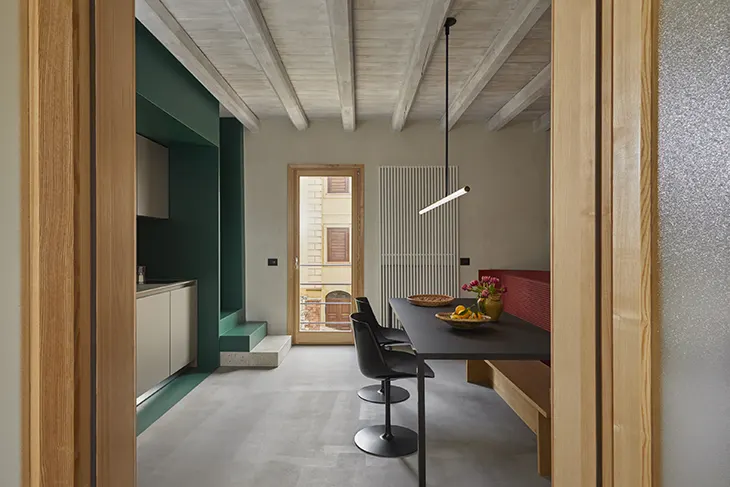
Didea approached the project as an act of architectural tailoring. Every element, from integrated furnishings to staircases, was designed specifically for the proportions of the rooms. Local craftsmanship, such as custom carpentry by Bonaccorso Arredamenti, adds precision and authenticity. Furnishings by e15, MDF Italia, Liu Jo Living, and CC Tapis, alongside lighting from Zava and Lambert & Fils, complete the interiors, reinforcing the project’s cohesive identity.
Sustainability is embedded in the decision to restore rather than rebuild. Natural, breathable materials like lime plaster and raw earth contribute to energy efficiency, while the reuse of the historic fabric reduces environmental impact. By working with local craftsmen and materials, the project emphasizes context-aware solutions instead of imported technologies.
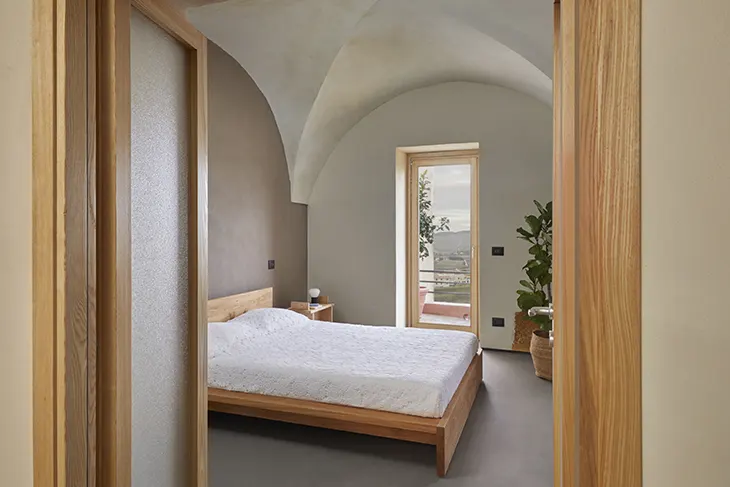
The Sambuca di Sicilia project illustrates both the opportunities and challenges of the “1 Euro House” programme. While the acquisition cost is symbolic, renovation requires careful planning and significant investment. Didea’s work shows how thoughtful architectural practice can transform these properties into liveable spaces while maintaining economic realism and cultural responsibility. The result is a home that bridges Sicilian identity with a contemporary outlook, an example of how small-scale interventions can revive historic centres with relevance and architectural quality.
